Reimagining Room Renting with RentSpot
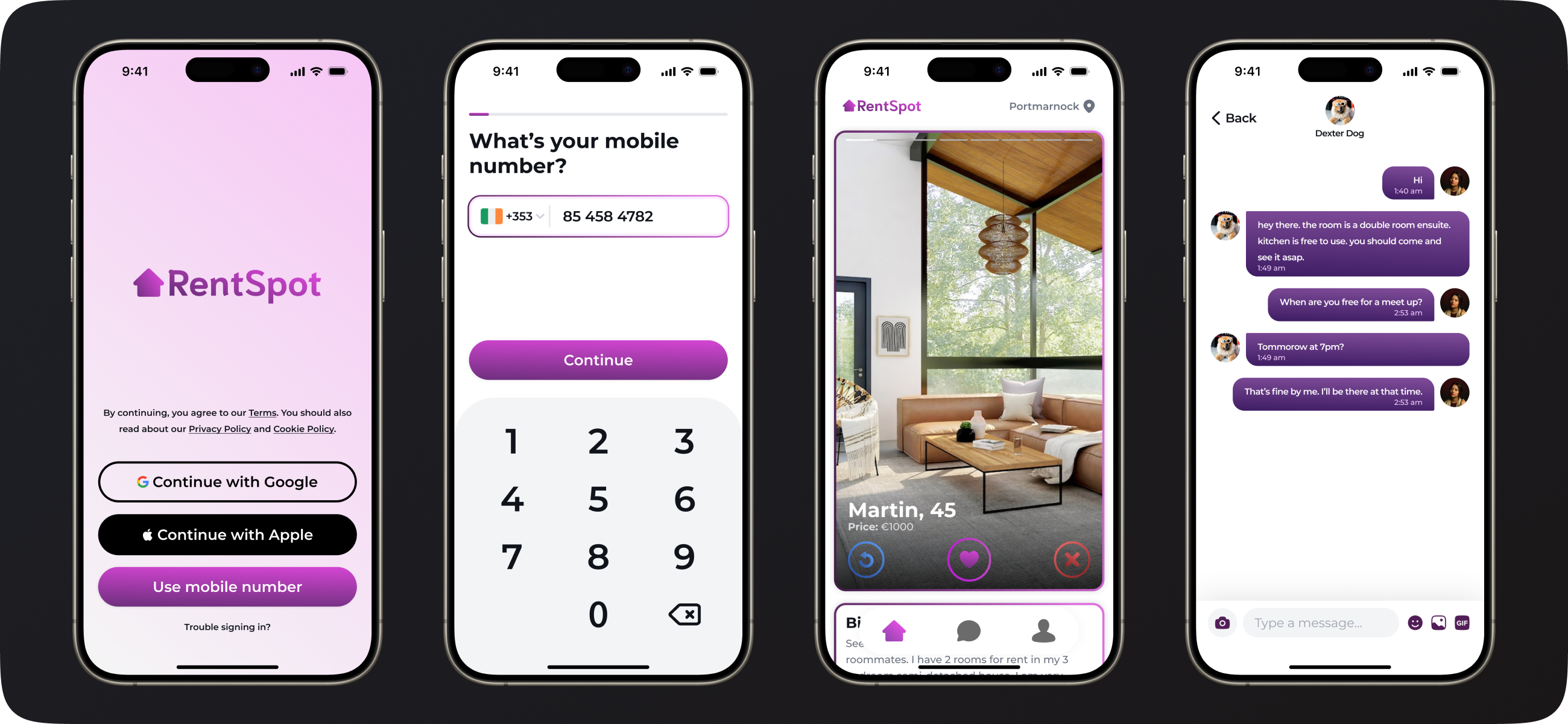
The potential impact of RentSpot
RentSpot simplifies the online room-finding process by matching users with suitable housemates and listings based on their preferences.
On RentSpot, users are fed suitable housemates and room listings based on the preferences and criteria they have selected during the simple set up flow. Our goal was to remove the cumbersome experience of finding rooms online and the feedback from the project shows that RentSpot was able to achieve this. After rigorous usability testing, RentSpot struck a chord with our testers, some of whom eagerly inquired about its public release date.
Meet the RentSpot team
I collaborated with another designer on various aspects of the project.
The brains behind this app are myself and a fellow designer, Shauna Byrne, both of us from the Creative Digital Media and UX Master’s Degree Program at Technological University Dublin. Shauna was responsible for generating the initial low fidelity paper sketches, while I took on the task of transforming these into digital wireframes as our ideas evolved. Additionally, I was tasked with designing the high fidelity screens and constructing a polished high fidelity prototype of the app. Together, we spearheaded numerous brainstorming sessions, carried out research and usability testing, and analysed and synthesised the data from the research. I then took the feedback from these sessions and refined the designs accordingly.
The genesis of RentSpot
RentSpot aims to create a user-friendly mobile app for room searching in Ireland, addressing issues like poor mobile experiences and lack of transparency about landlords found on existing platforms.
RentSpot was born out of the need to improve the room searching experience in Ireland. The existing platforms, primarily web-based, are not mobile-friendly, making navigation difficult and the user experience less than ideal.
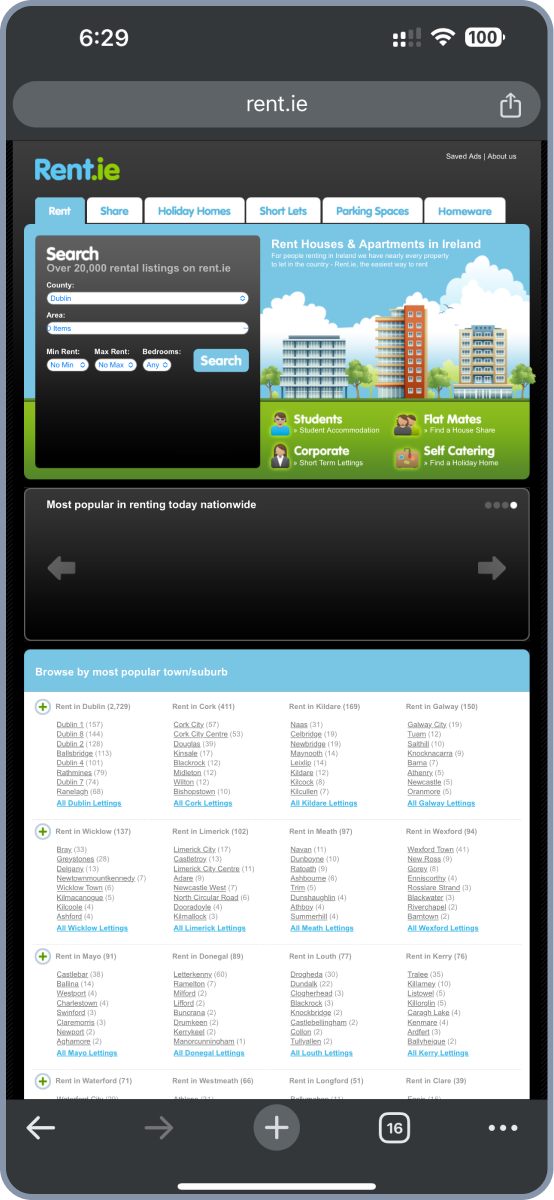
We also conducted interviews with five participants to gain deeper insights into the experiences of renters in Ireland. The results confirmed our initial observations. Furthermore, we identified a significant issue, the lack of transparency about the backgrounds of rentors on these platforms was a significant barrier to trust and connection.
How might we improve the experience of renters and rentors in the housing market?
We started sketching out a swipe-based interface for a room-finding service with separate set up flows for renters and rentors.
Armed with the knowledge gained from our research, we began the ideation process. We knew we wanted to simplify and streamline the room finding process in Ireland. We also wanted to give users the ability to get to know potential housemates.
Inspired by the intuitive and engaging interfaces of popular dating apps like Bumble and Tinder, we sketched out the setup flows in a progressive wizard-style interface. We created separate flows for renters (those looking for a room) and rentors (those offering a room). This approach allowed us to collect different types of information needed for the two user groups.
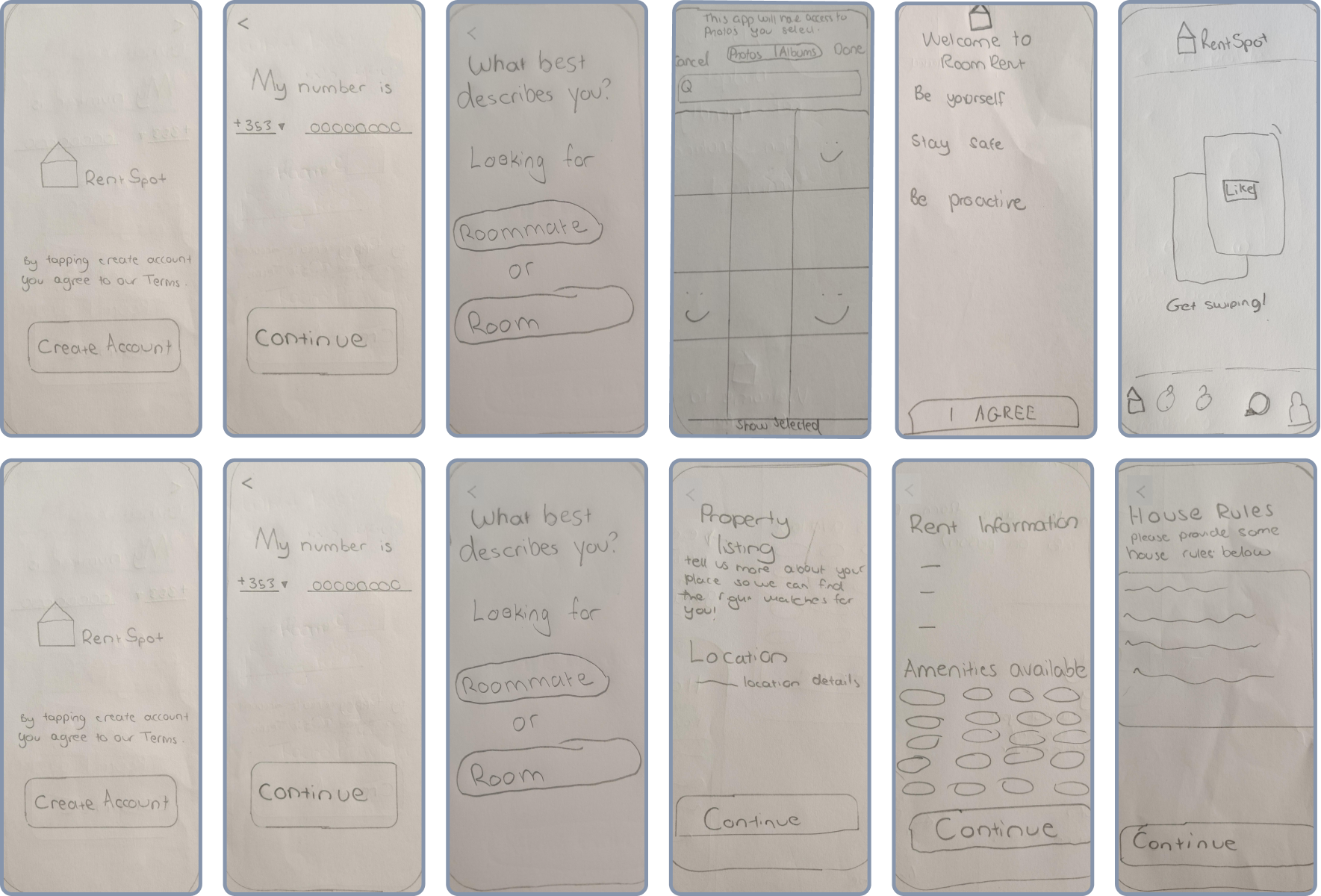
The main content was served in a serial presentation style, similar to the aforementioned apps, enabling users to easily access detailed information about potential housemates.
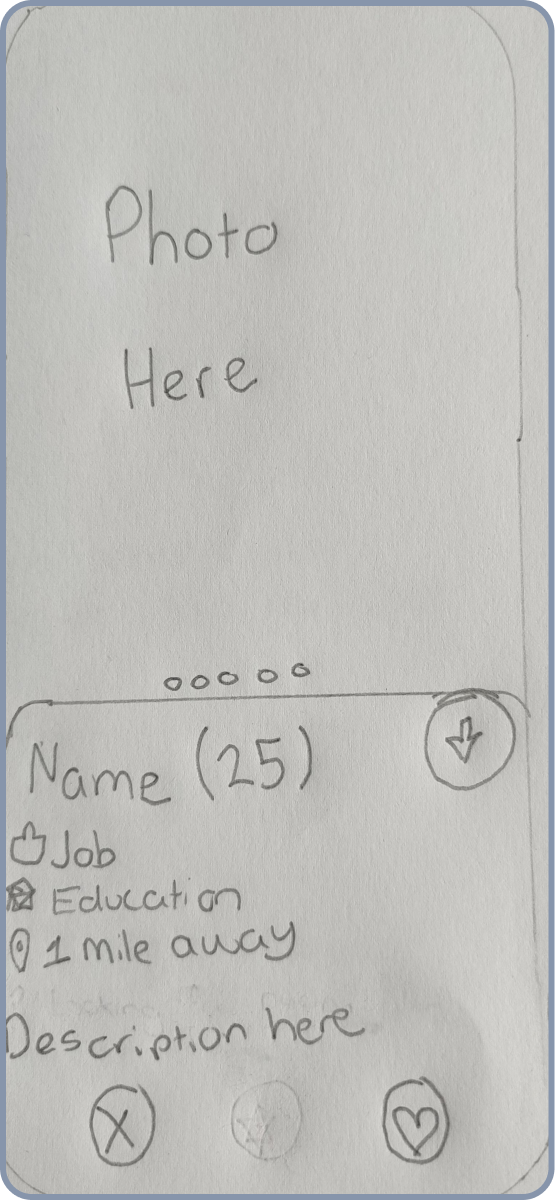
Evolving our ideas from paper to screen
The design process progressed from initial sketches to digital wireframes and high-fidelity mockups, focusing on three main user flows: profile setup, housemate matching, and messaging.
The initial sketches served as the foundation for our digital wireframes, which helped us refine our ideas further. From these digital wireframes, we started to get a sense of what the final layout should look like.
Once we were satisfied with the general layout of the digital wireframes, we transitioned into creating high fidelity mockups. In these mockups, we focused on designing three main flows for testing.
Setting up a profile (both as a renter and rentor).
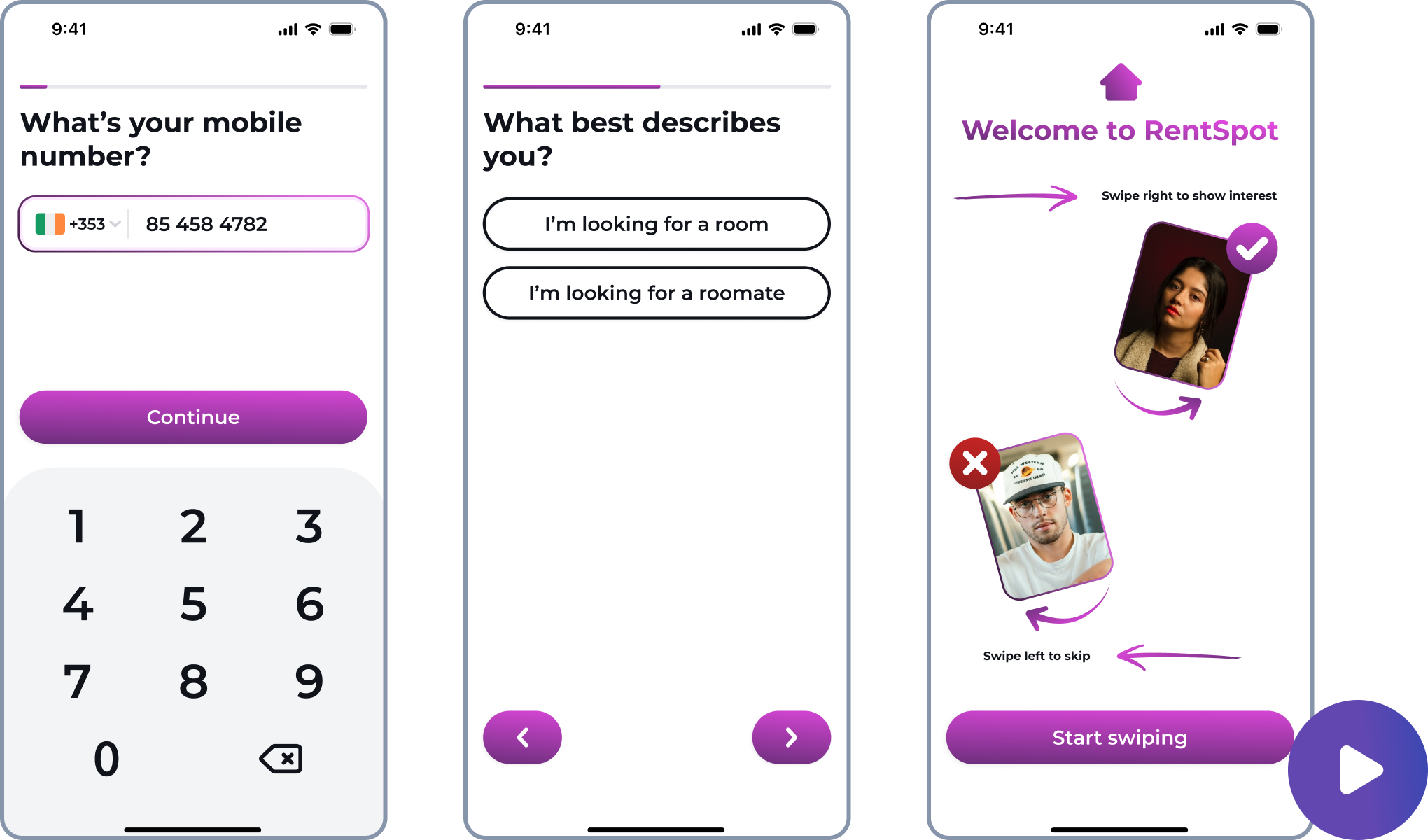
Matching with a potential housemate.
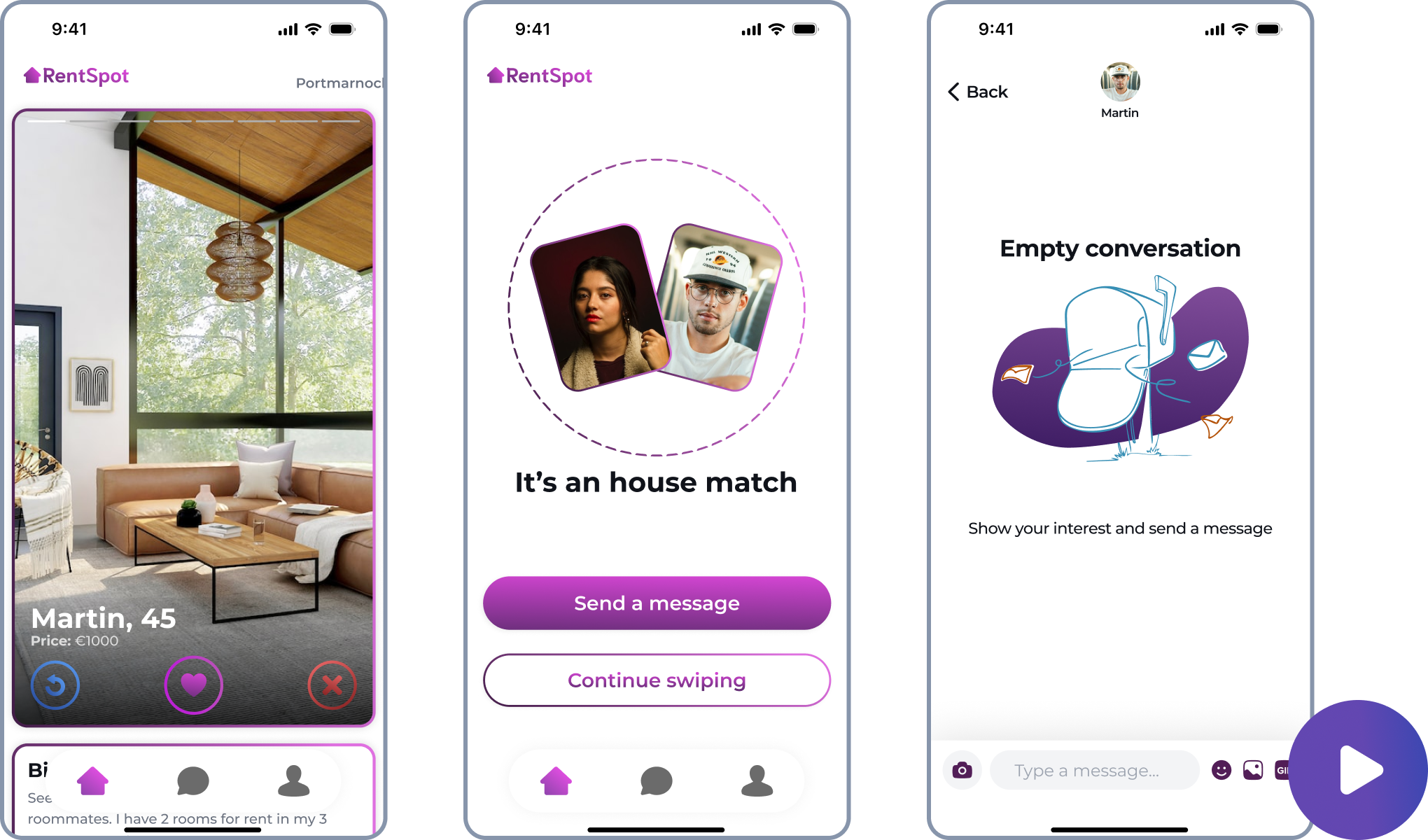
Sending messages to a potential housemate.
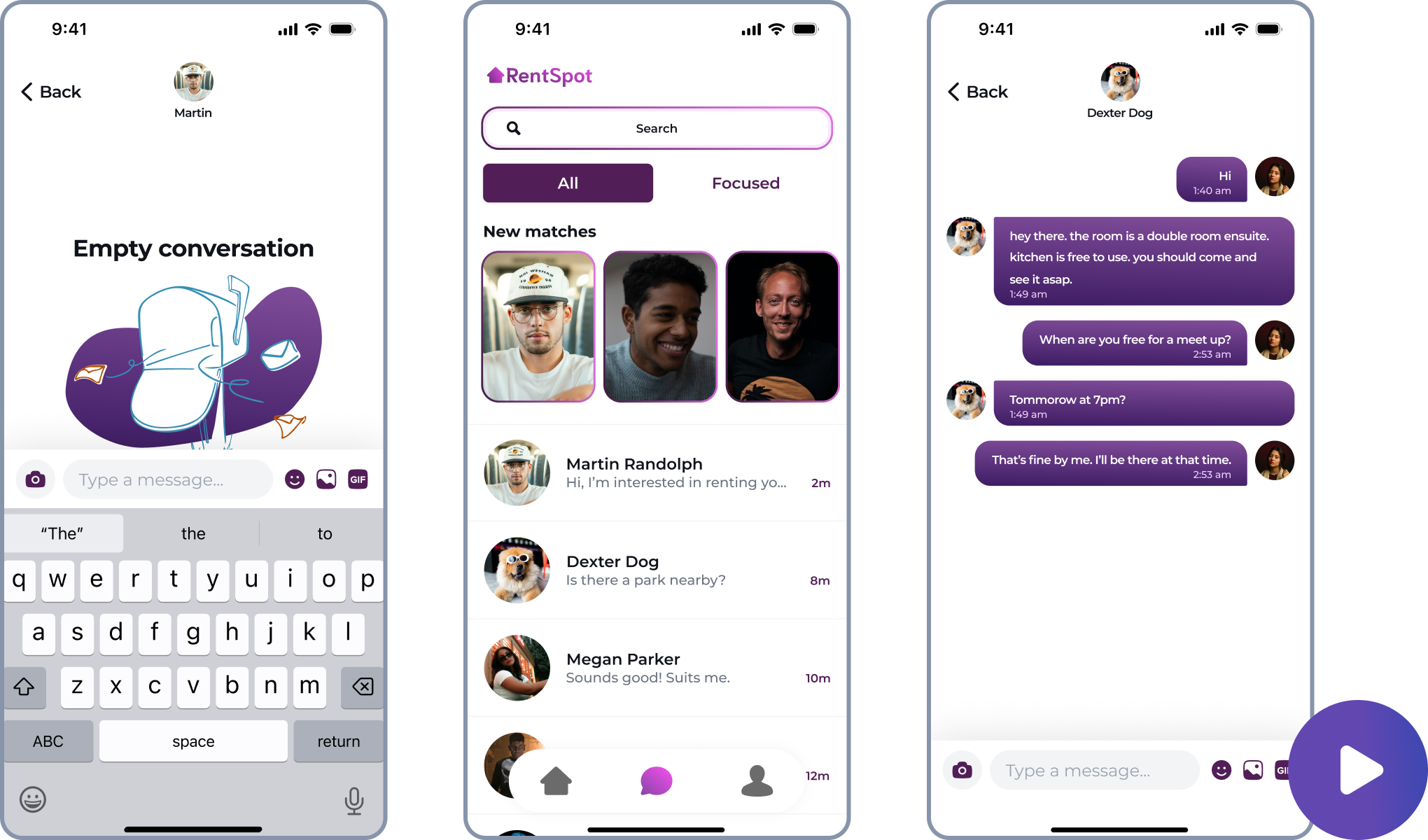
Helping renters and rentors know each other better.
The platform streamlines housemate matching by guiding users through a simple profile setup, capturing personal details and preferences to help people get a good sense of potential flatmates.
Our platform simplifies the process of getting to know potential housemates by implementing a step-by-step, wizard-style profile setup. This approach allows users to effortlessly create a profile, eliminating any complications. The profile includes sections for personal details such as age, gender, and a short biography, as well as individual interests and housing preferences. This comprehensive information enables users to gain a clear understanding of what a potential housemate might be like.
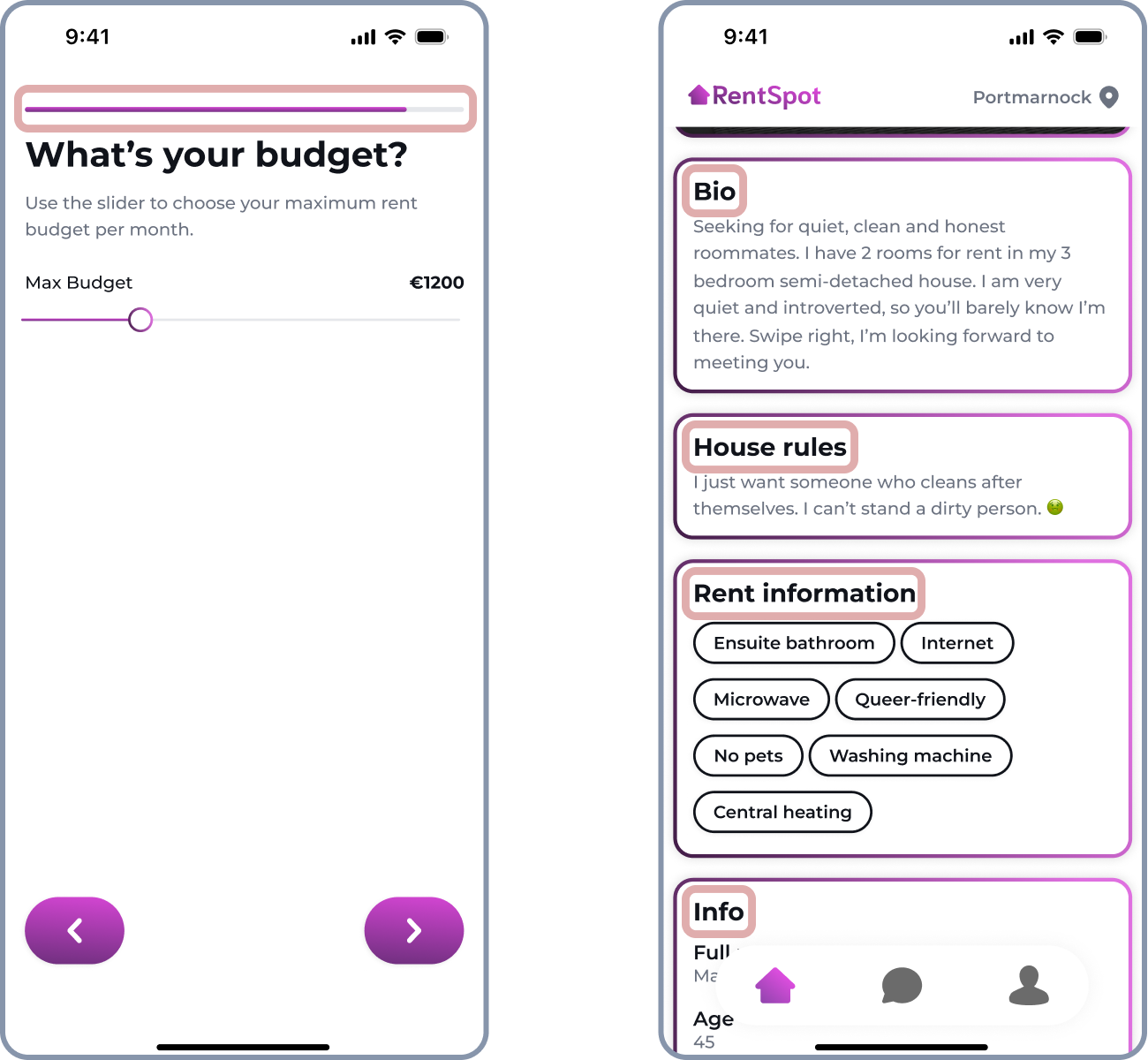
Encouraging user engagement with game-like interactions
The app combines detailed housemate profiles with a swipe-based interface, similar to dating apps, to make finding a housemate more engaging and personal.
In addition to being able to see in-depth information about a potential housemate, we've incorporated a swipe-based user interface, similar to popular platforms like Bumble and Tinder, to make the process of finding a potential housemate more engaging and personal. This interactive approach encourages users to connect and initiate conversations with their potential "house matches" quickly.
Adapting user feedback and increasing user personalisation
The high-fidelity prototype received positive feedback for its ease of use and transparency.
We tested the high fidelity prototype and the feedback was overwhelmingly positive, with users praising the app's ease of use and its potential to bring transparency to the room hunting process.
- 5/5 participants said they were you able to create a profile easily?
- 5/5 participants chose “Easy” on a scale of “Hard, Neutral Easy” when asked how hard it is to set up a profile.
- 4/5 participants said the description in the profile information was optimum.
However, we also identified areas for improvement. For instance, users expressed a desire to manually input their interests and rent preferences, a feature we hadn't initially considered. Initially, we only provided preset options that users could select using chips. To address this feedback, we introduced an input box for users to add interests not listed in the preset options. This enhancement gave users a higher level of personalisation.

Accessibility and inclusivity at the forefront
We were committed to accessibility throughout the design process, from diverse participant selection in research to implementing inclusive UI design features.
Throughout the entire design process, accessibility was prioritised. Starting from our preliminary research, we ensured that our interview participants represented Ireland's diverse renter population. We acknowledge that research sampling should always represent the target users for more accurate data. This commitment to inclusivity carried through to the UI design phase, where we incorporated web accessibility guidelines regarding colour contrast, font sizes etc., making sure every detail was crafted with all users in mind.
My reflections about ethical implications and unintended consequences
The app, while facilitating quick connections between potential housemates, raises ethical concerns about possible discrimination.
As the project concluded, I found myself grappling with ethical dilemmas, particularly regarding potential discrimination and prejudice. The app's ease of use, which allows users to quickly view information about potential housemates and connect also has a downside. It means users can also easily dismiss potential housemates based on prejudiced views. However, I also understood that when seeking an housemate, people will naturally gravitate towards those who align with their preferences and lifestyle.
In conclusion
This app simplifies housemate-finding for renters and rentors, addressing key issues and exceeding user expectations.
RentSpot was envisioned as a tool to simplify the process for renters and rentors to find suitable housemates. We're proud to have developed an app that not only addresses the initial pain points identified in our research but also surpasses our users' expectations. The positive feedback we've received is a testament to RentSpot's success in resonating with our potential user base.